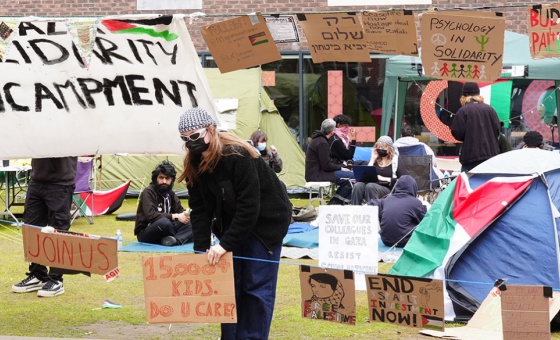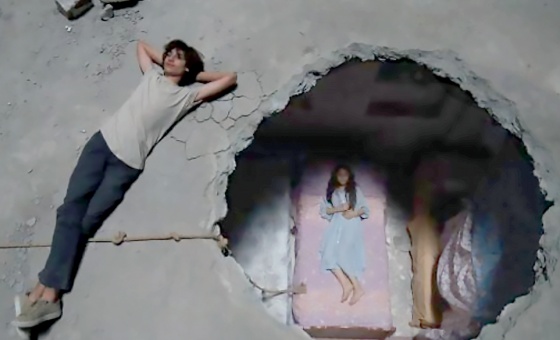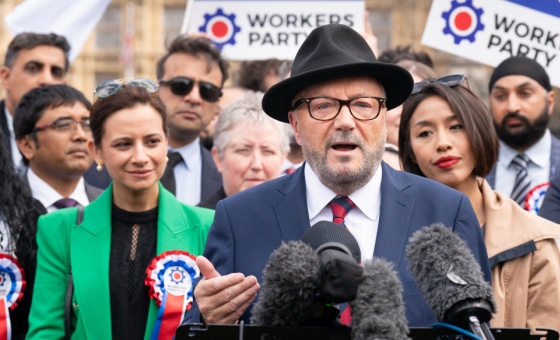This is the last article you can read this month
You can read more article this month
You can read more articles this month
Sorry your limit is up for this month
Reset on:
Please help support the Morning Star by subscribing here
THE 20-year US-led invasion and occupation of Afghanistan have been a complete disaster on every level.
For anyone who doubts the inefficacy of the US-led occupation of the country over the past two decades, listen to Richard Hanania, former research fellow at Columbia University, who clarifies the impact of the war and occupation of Afghanistan, vituperating the incompetence of the occupation as he concludes that the entire operation was a failure of immense proportions from the tactical to the economic.
By 2014, the US occupation in Afghanistan had cost more than the Marshall Plan that helped Europe recover after World War II.
Adjusting for inflation and in today’s currency, the Marshall Plan investment would equal $103.4 billion where the war and occupation of Afghanistan have cost US taxpayers over $2.6 trillion.
To put these figures into perspective, according to the US Department of Housing and Urban Development, homelessness could be ended in the US entirely with only $20bn.
And those doing the funding might even take to Twitter to celebrate this fact!
Still, many Twitter feminists are vastly angry with Joe Biden despite their rights being shoved back to a pre-Taliban era as they “come out” on Twitter on gender critical.
Rakib Ehsan eloquently sums this situation up perfectly framing these feminists as cultural imperialists who “dare not challenge misogynistic patriarchal attitudes which exist in domestic minority communities.”
Americans and their Western counterparts need to understand that democracy, like women’s rights, is not a one-size-fits-all package.
Every fact, when you step away from political dogma, demonstrates that the Western presence was not only unwanted, but that many Afghans actually wanted the Taliban back in power: from the 307,000 Afghanistan soldiers and police trained and armed by the US were unable to defeat 60,000 Taliban fighters who had no air force, artillery or tanks, to the millions of strikes and support sorties that could not hold over the Afghan military to the brokering of planeloads of US cash that supported the economy where warlords and politicians squabbled over elections.
Pretending the attacks and occupation that the US and other nations undertook in Afghanistan did not harm the women and girls of that nation is a massive blunder.
There’s been little mention of the tens of thousands of Afghans killed, wounded and maimed to include the many women, children, the elderly, hospitals, schools, and entire villages exterminated in drone attacks.
Since 2001, approximately 241,000 people have been killed in the Afghanistan and Pakistan wars and more than 71,000 of those killed have been civilians.
Afghanistan has experienced a continued Western presence since former president Jimmy Carter initiated a covert programme through the CIA to financially support the Afghan rebels, the mojahedin, in July 1979.
Operation Cyclone (1979-89), was one of the longest and most expensive covert CIA operations ever undertaken, with more than $20 billion in US funds being funnelled into the country to train and arm Afghan resistance groups.
The Soviets were unable to suppress the insurgency and withdrew from Afghanistan in 1989, precipitating the dissolution of the Soviet Union.
However, the decision to route US aid through Pakistan led to massive fraud as weapons sent to Karachi were frequently sold on the local market rather than delivered to the Afghan rebels.
Gilles Kepel, French political scientist and Arabist, contended that Karachi soon “became one of the most violent cities in the world.”
Pakistan also controlled which rebels received assistance. Of the seven mojahedin groups supported by the government of General Muhammad Zia-ul-Haq, four espoused Islamist fundamentalist beliefs — and it was these fundamentalist groups that received most of the funding.
The US attempts to conquer the Taliban in 2001 were represented within Western media through a very black-and-white narrative to include the posturing of the original invasion as being about women’s rights, while the media was flooded with images of women in burka — women who prior to 2001 were virtually invisible in Western media.
Bookstores around the West soon created their own Taliban sections with more books replete with burka photos and even within those book sections entirely unrelated books like Not Without My Daughter, which has become a go-to for feminist orientalism.
This pretext of “saving women” was the beginning of the US surveillance of civilians back home with the expanded use of CCTV cameras under the guise of “homeland security” along with the US government’s use of “special registration” which kept tabs on immigrant Muslim men in the country meant that civil liberties were ceded under the auspices of “counter-terror protection.”
Even the coverage of the Taliban’s opium production in the early 2000s read like a bad turf war between gangs where the reality is— and the US should know this best of all — the illicit drug business has regularly played a role in transnational politics, with poppy cultivation soaring 37 per cent during the pandemic.
It was partly due to the Taliban’s opium production that it managed to oust the Afghan government.
Last month, we were told that the Taliban will no longer allow the production of opium and one must wonder if they will begin producing the wax pen for CBD or if this is more political fanfare.
The bottom line is that the Taliban have once again pushed out a foreign body trying to colonise their land and people.
There is something deeply troubling about Western “feminists” on Twitter crying for the reinvasion of Afghanistan or the importation of their political values, believing this will bode well for anyone, least of all Afghan women and girls.
Many feminists — to include many Labour voters — elide the reality of women in Afghanistan who have been fighting for their rights for decades.
The Revolutionary Association of the Women of Afghanistan (Rawa) is a political organisation that has fought for women’s rights in the country while denouncing religious fundamentalism since its founding in 1977.
Rawa has also opposed the US policy in the region, the US-led attacks and the US-backed government.
While I loathe the term “white feminism,” I am wholeheartedly in agreement with Rafia Zakaria who writes: “Afghan feminists never asked for Meryl Streep’s help — let alone US air strikes.”
Afghan women are completely capable of deciding their lives and political futures.
Those who believe that the end of this occupation was wrong, please review recent history which has come to its full violent circle.
A group of insurgents dismissed as “medieval Islamic fundamentalist savages” who would be vanquished before the modernising actions of the West have shown up — as many generations of previous Afghan fighters have before them — the futility and absurdity of meddling in their country’s affairs.
The Afghan women of Rawa have been doing this work for decades and instead of pretending that we have to teach Afghan women how to do feminism right, it is likely that the Western feminists venting their anger about homeless women might need to learn from the good women of Afghanistan.
At the very least Afghan women know what class consciousness, feminist solidarity, and anti-imperialism are about.











